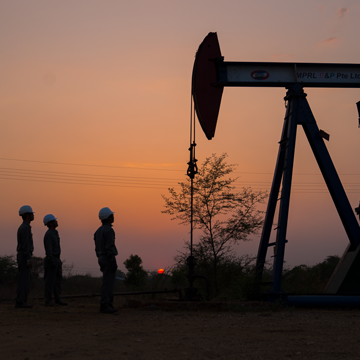After five years of exploration, MPRL E&P made the first gas discovery (Pyi Thar-1 in 2012) in the Western Ayeyarwady Basin at its sole risk with its own funds. Woodside and Total became co-venturer in 2013 and 2015 respectively. The resulting second gas discovery was followed by three more gas wells in 2017-2018. Five out of five wells drilled in Block A-6 found gas and brought the joint venture within line of sight of commerciality. The joint venture is now striving to unlock the supply of a clean and long-term sustainable source of energy to drive the development of the nation.

Block A-6, covering nearly 10,000 km2 from the shore to more than 2,400 m water depth, only had some 1,330 km of old vintage 2D seismic data when MPRL E&P signed the production sharing contract in January 2007.
Since then, MPRL E&P undertook extensive geological studies which included four field study expeditions all along the Western Ayeyarwady coast and acquired nearly 2,000 km of 2D seismic in 2009. This was followed by the acquisition of the first 3D seismic survey in the block.
Pyi Thar-1, the first well drilled in the block which resulted in a gas discovery, was drilled in March 2012 in 200 m water depth. The well successfully identified a new petroleum play system consisting of sands deposited by what is believed to be ancient Ayeyarwady submarine river course (see “MPRL E&P’s Pyi Thar Gas Discovery – Realizing the Vision for Long-Term Sustainable Energy in Myanmar” and “Press Release of Well Pyi Thar-1”).
Attracted by this exciting find, Woodside farmed-in to the block in 2013 and the JV acquired a new 3D seismic survey over a large structure located in the ultra deep water region and first identified by MPRL E&P in its 2D seismic survey in 2009. Total joined the block A-6 joint venture in 2015.
A second gas discovery was achieved when Shwe Yee Htun-1, the second exploration well in the block, was drilled in late 2015 targeting a prospect over 5 km from the surface and in water depths of 2,034 m. This outcome has enabled the block to move into the appraisal phase. Shwe Yee Htun-1 also holds the record for the offshore well drilled in the deepest water depth in Myanmar. ( see “Press Release of Well Shwe Yee Htun-1″)
Another 3D seismic data acquisition campaign was undertaken in April 2016 whereby the joint venture is now aggressively planning for subsequent appraisal wells to be drilled with the intent towards rapidly understanding the commercial feasibility of the asset.
As a third gas discovery well, Pyi Thit-1 was drilled in ultra-deep waters of Block A-6 in June 2017. This well discovered gas in channel sands at shallower depth than Shwe Yee Htun-1 (2,001 m), with excellent reservoir quality which comforted the A-6 JV in the reliability of the seismic image. This well was tested and flowed 50 MMscf/d of gas, a rate which was constrained by the equipment of the drill-ship; pressure monitoring indicated access to a substantial pool of gas. (see “Press Release Well of Pyi Thit-1”)
Pyi Tharyar-1, as a fourth well in Block A-6, was drilled in August 2017 and targeted a much shallower play below sea bottom in deeper waters to the West. This well showed only 3 m of gas-bearing sands. This result, however, further reinforced the A-6 JV’s confidence in discriminating between gas and water-bearing sandstones using 3D seismic.
As a fifth gas discovery well, the Appraisal Well Shwe Yee Htun-2 has been successfully drilled in July 2018 with formation evaluation results indicating a gas column and net pay thickness that substantially exceeds prior expectations. Wireline formation evaluation including pressure measurements demonstrates that the reservoir is highly likely to be in pressure communication with the 2016 Shwe Yee Htun-1 discovery, which is approximately 10km east of the current drilling location. Drill stem test results indicate Shwe Yee Htun-2 achieving a flow rate of 50 million standard cubic feet per day (up to 53.7 million standard cubic feet per day) of gas limited by testing equipment through a 40/64″ choke. ( see “Press Release of Well Shwe Yee Htun-2″)
On 16 December 2019, MPRL E&P and its Block A-6 Joint Venture partners Woodside and Total, successfully executed two agreements with Myanma Oil & Gas Enterprise (MOGE). These agreements include the Fourth Amendment and Supplementary Agreement to the Production Sharing Contract and the Agreement on Upstream and Midstream Ratio. These agreements establish the necessary fiscal framework enabling the Block A-6 project to best achieve economic viability. They further provide a clear line of sight towards the commerciality of this ASEAN’s first ultradeep water gas development project with first gas targeted for 2023.
MPRL E&P continues to lead the offshore exploration sector by moving closer towards unlocking the gas potential of block A-6 in the form of a clean and long-term sustainable energy supply that Myanmar may leverage to drive progress in the nation.






